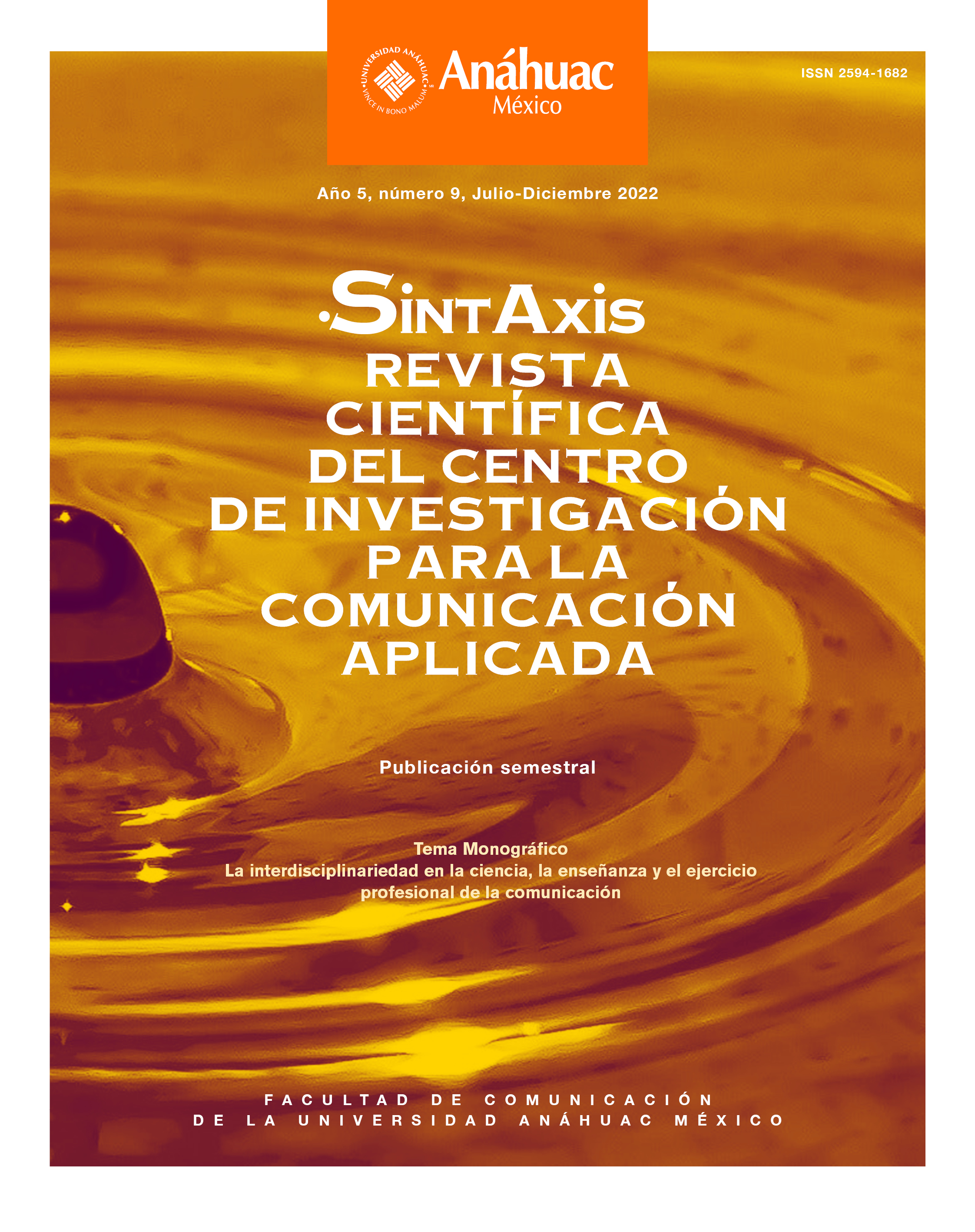El espacio de los flujos y las tecnologías de la movilidad: desafíos sociales para la innovación
DOI:
https://doi.org/10.36105/stx.2022n9.03Palabras clave:
espacios de flujo, movilidad, competitividad urbana, innovación social, ticResumen
El trabajo tiene como objetivo identificar las posibilidades que ofrecen para la innovación social y la reactivación económica posterior a la pandemia por covid-19, la vinculación entre las Tecnologías de Información y Comunicación (TIC) y las tecnologías de movilidad en las ciudades contemporáneas. En la primera parte se realiza un análisis sociohistórico de las innovaciones en las tecnologías de las comunicaciones y los transportes durante la Revolución Industrial, en la segunda parte, tomando como base el concepto del espacio de los flujos desarrollado por Manuel Castells, se identifican los principales componentes y características de la articulación entre las tic y la transformación socio-territorial de las ciudades contemporáneas, fundamentalmente a través de la conectividad y el establecimiento de cadenas de valor con otras ciudades a nivel nacional, regional y global, prefigurándose como uno de los factores para la competitividad urbana. Por último, se analizan los indicadores presentes en dos índices de competitividad urbana, como una muestra inicial de posibles factores para la innovación social y la recuperación económica.
Descargas
Referencias
Arrese, Á. (2002). Prensa económica. De la Lloyd’s list al wsj.com. Universidad de Navarra (EUNSA).
Arrese, Á. (2004). Información económica y de negocios. Periodismo especializado, 285-315.
Beaverstock, J., Smith, R., y Taylor, P. (1999). A roster of world cities. Cities, 16(6), 445-458.
Borja, J., y Castells, M. (1999). Local y global. La gestión de las ciudades en la era de la información. UNCHS-Santillana.
Briggs, A., y Burke, P. (2006). De Gutenberg a Internet. Una historia social de los medios de comunicación. Santillana.
Camero, A., y Alba, E. (2019). Smart City and information technology: A review. Cities, 93, 84-94. https://doi.org/10.1016/j.cities.2019.04.014
Castells, M. (1995). La ciudad informacional. Tecnologías de la información, reestructuración económica y el proceso urbano-regional. Alianza Editorial.
Castells, M. (1999). El espacio de los flujos. La era de la información. Economía, sociedad y cultura. 1, 453-506.
Castells, M. (2001). La Galaxia Internet. Plaza & Janés.
Castells, M. (2012). Comunicación y poder. Siglo XXI.
Castells, M., y Hall, P. (2001). Tecnópolis del mundo. La formación de los complejos industriales del siglo XXI. Alianza.
Davis, K. (1959). The World’s Metropolitan Areas. University of California.
Devriendt, L., Boulton, A., Brunn, S., Derudder, B., y Witlox, F. (2011). Searching for Cyberspace: The Position of Major Cities in the Information Age. Journal of Urban Technology, 18(1). https://doi.org/10.1080/10630732.2011.578410
Franke, S., y Vorstermans, A. (2012). Compendium for the civic economy. Trancity valiz.
Friedmann, J., y Wolff, G. (1982). World city formation: an agenda for research and action. International Journal of Urban and Regional Research, 6(3), 309-344. https://doi.org/10.1111/j.1468-2427.1982.tb00384.x
Glaeser, E. (2011). El triunfo de las ciudades. Santillana.
Hall, P. (1966). The World Cities. World University Library.
Hu, R. (2016). Concentration and Mobility of Knowledge Workers: An Intercity Analysis of Sydney. Journal of Urban Technology, 23(1), 11-28. https://doi.org/10.1080/10630732.2015.1090190
Jefferson, M. (1939). The Law of the Primate City. Geographical Review, 29(2), pp. 226-232. https://doi.org/10.2307/209944
Jefferson, M. (1940). The Great Cities of the United States. Geographical Review, 31(3), 479-487. https://doi.org/10.2307/210181
Kearney. (2021). Global Cities: divergent prospects and new imperatives in the global recovery. 2021 Global Cities Report. https://www.kearney.com/global-cities/2021
Knox, P. L., y Taylor, P. J. World cities in a world-system. Cambridge Universiy Press.
Kresl, P., y Singh, B. (1999). Competitiveness and the Urban Economy: Twenty-four Large US Metropolitan Areas. Urban Studies, 36(5-6), 1017-1027. https://www.jstor.org/stable/43100361
Malecki, E. (2002). The Economic Geography of the Internet’s Infraestructure. Economic Geography, 78(4), 399-424. https://doi.org/10.2307/4140796
Millán, H. (1996). La competitividad de la industria manufacturera del Estado de México. Seminario de Investigación. El Colegio Mexiquense.
Ni, P., Ding, R., y Kamiya, M. (2017). Cities Network Along the Silk Road, The Global Urban Competitiveness Report 2017. China Social Science Press. https://doi.org/10.1007/978-981-10-4834-0
ONU-Habitat. (2021). Cities and Pandemics: Towards a More Just, Green and Healthy Future. United Nations Human Settlements Programme (UN-Habitat). https://unhabitat.org/sites/default/files/2021/03/cities_and_pandemics-towards_a_more_just_green_and_healthy_future_un-habitat_2021.pdf
ONU-Habitat-Centro Urbano. (2020). La Nueva Agenda Urbana Ilustrada. Programa de las Naciones Unidas para los Asentamientos Humanos (onu-Habitat). https://unhabitat.org/sites/default/files/2021/10/nueva-agenda-urbana-ilustrada.pdf
Sassen, S. (2001a). Elementos teóricos y metodológicos para el estudio de la ciudad global. La ciudad construida. Urbanismo en América Latina, 177-198.
Sassen, S. (2001b). The global city. New York, London, Tokyo. Princeton University Press.
Smith, D., y Timberlake, M. (2001). World City Networks and Hierarchies, 1977-1997: An Empirical Analysis of Global Travel Links. American Behavioral Scientist, 44(10), 1656-1678. https://doi.org/10.1177/00027640121958104
Sobrino, J. (2002). Competitividad y ventajas competitivas: revisión teórica y ejercicio de aplicación a 30 ciudades de México. Estudios Demográficos y Urbanos(50), 311-361. https://doi.org/10.24201/edu.v17i2.1141
Sobrino, J. (2005). Competitividad territorial: ámbitos e indicadores de análisis. Economía, Sociedad y Territorio, 123-183. https://www.redalyc.org/comocitar.oa?id=11109906
Susser, I. (Ed.). (2002). The Castells Reader on Cities and Social Theory. Blackwell Publishers.
World Economic Forum. (2021). The Belt and Road Cities’ Connectivity Index. World Economic Forum.
Zhen, F., Qin, X., Ye, X., Sun, H., y Lousang, Z. (2019). Analyzing urban development patterns based on the flow analysis method. Cities, 86, 178-197. https://doi.org/10.1016/j.cities.2018.09.015
Zook, M. (2001). Old Hierarchies or New Networks of Centrality? The Global Geography of the Internet Content Market. American Behavioral Scientist, 44(10). https://doi.org/10.1177/00027640121958113
Zook, M., y Brunn, S. (2006). From Podes to Antipodes: Positionalities and Global Airline Geographies. Annals of the Association of American Geographers, 96(3), 471-490. https://doi.org/10.1111/j.1467-8306.2006.00701.x
Publicado
Número
Sección
Licencia
Derechos de autor 2022 Dr. Alberto Carrera Portugal

Esta obra está bajo una licencia internacional Creative Commons Atribución-NoComercial-SinDerivadas 4.0.
Sintaxis. Revista científica del Centro de Investigación para la Comunicación Aplicada© se distribuye bajo una Licencia Creative Commons Atribución-NoComercial-SinDerivadas 4.0 Internacional.
El autor conserva los derechos patrimoniales sin restricciones y garantiza a la revista el derecho de ser la primera publicación del trabajo. El autor es libre de publicar en cualquier otro medio su artículo, como un repositorio institucional.

















